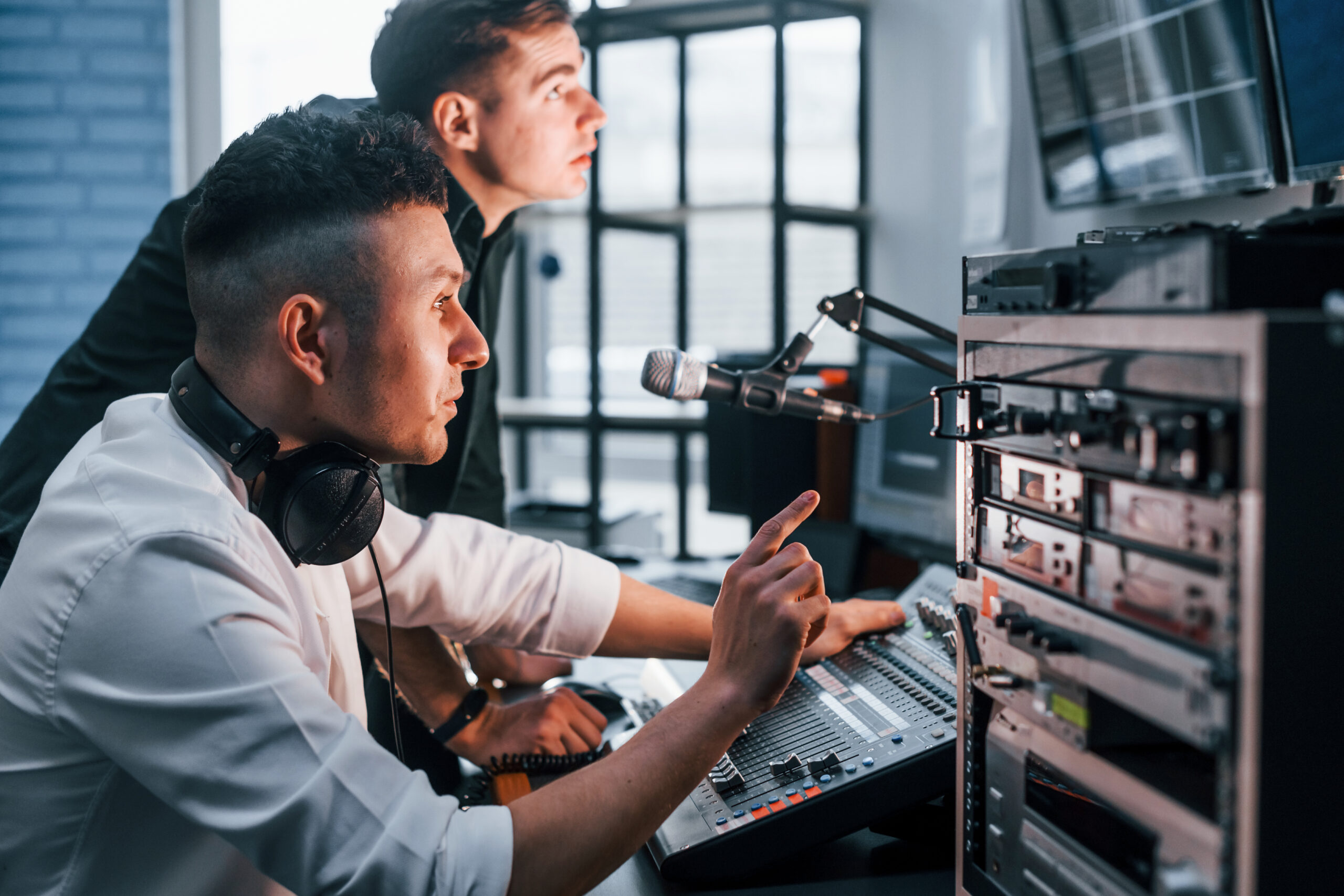Discovering My Voice Behind the Mic
When I first sat behind a microphone at Emerson College’s radio station, I had no idea it would be one of the most formative experiences of my life. At the time, it was just something I wanted to try—a new way to stay close to performance, music, and storytelling. What started as curiosity quickly became a kind of training ground, shaping how I communicate, how I listen, and eventually, how I work as a producer in theater.
I wasn’t chasing fame or trying to be the next big radio personality. I just liked the rhythm of it. Sitting in that small studio in Boston, talking into a mic while the rest of the world went about its day, gave me an unexpected sense of connection. I couldn’t see the people listening, but I could feel them. And that, in a strange way, taught me a lot about audience—something that has remained central to everything I do in theater.
The Art of Listening, Not Just Talking
One of the biggest lessons I learned during those radio years was how to really listen. It sounds simple, but in a performance setting—whether you’re on air, on stage, or behind the scenes—listening is everything. On the radio, there’s no applause to guide you, no facial expressions to read, no body language to lean on. You have to tune into tone, into pacing, into silence. You learn to hear what’s not being said as much as what is.
That skill followed me straight into theater production. As a producer, my job is often to listen first—whether it’s to a playwright describing their vision, a director navigating a challenge, or an actor working through a moment. Listening is the foundation for collaboration. And radio taught me how to do it without distraction, without ego, and without always jumping in to fix things right away.
Timing Is Everything
Radio also gave me a strong sense of timing—another key part of working in theater. On air, you learn quickly how long thirty seconds actually is. You get comfortable with silence, but you also learn how to use it effectively. You know when to pause, when to push forward, and when to hold a moment just a little longer.
That awareness of rhythm has shaped how I think about pacing in a theatrical context. It’s not just about what’s happening in the spotlight, but how everything flows together—the transitions, the emotional beats, the energy of the room. I credit a lot of my sensitivity to tempo and timing to those early years behind the mic.
Building an Audience You Can’t See
One of the strangest things about doing radio is that you’re performing for an audience you can’t see. There’s no immediate feedback. You don’t know who’s out there or what they’re thinking. But you keep talking. You trust your instincts. You build a kind of relationship based on presence and consistency.
That idea of reaching people you don’t see became surprisingly useful once I moved into producing. Theater audiences may be visible in the room, but producers are rarely the ones in the spotlight. We’re often operating behind the scenes, quietly influencing the experience. Like radio, producing is about shaping atmosphere and tone, about guiding people through a story, even if they never know you were part of it. I learned how to do that in a soundproof booth with a single red “on air” light blinking in front of me.
From One Medium to Another
Transitioning from radio to theater didn’t feel like a leap—it felt like a shift in platform. The core ideas stayed the same: connect with people, respect their time, offer something meaningful. The tools were different, but the purpose was familiar.
I think sometimes we undervalue the way skills carry across creative mediums. It might not seem obvious that live radio and live theater share so much DNA, but in my experience, they do. Both require attention to detail. Both rely on trust and timing. And both are, at their best, about creating something honest and immediate for an audience that wants to be moved.
The Quiet Influence of Experience
Looking back now, I realize how much those radio days shaped me—not just as a producer, but as a collaborator, a listener, and a storyteller. I didn’t need to be in the spotlight to feel connected to performance. I just needed to be part of the process. That same drive is what keeps me going in theater now.
There’s something powerful about remembering where your voice first came alive. For me, it was in that Emerson studio, broadcasting music and stories into the ether, hoping someone out there was listening. And now, years later, I still carry that same hope into every project: that someone out there will hear what we’re trying to say—and that it will matter.
Still Listening, Still Learning
The tools have changed. The spaces have changed. But what hasn’t changed is the need to listen. Whether it’s in a rehearsal room or a producers’ meeting, that early habit of really hearing people continues to guide me.
I owe a lot to that little studio and that blinking red light. It taught me how to hold space for others, how to trust my instincts, and how to craft moments that can connect—even when you can’t see who’s watching or listening.
And maybe that’s the heart of it: performance, at its core, is about reaching someone. Whether you’re on stage or on air, that connection is the point. I learned that with headphones on and a mic in front of me—and I carry it with me into every theater I walk into now.
